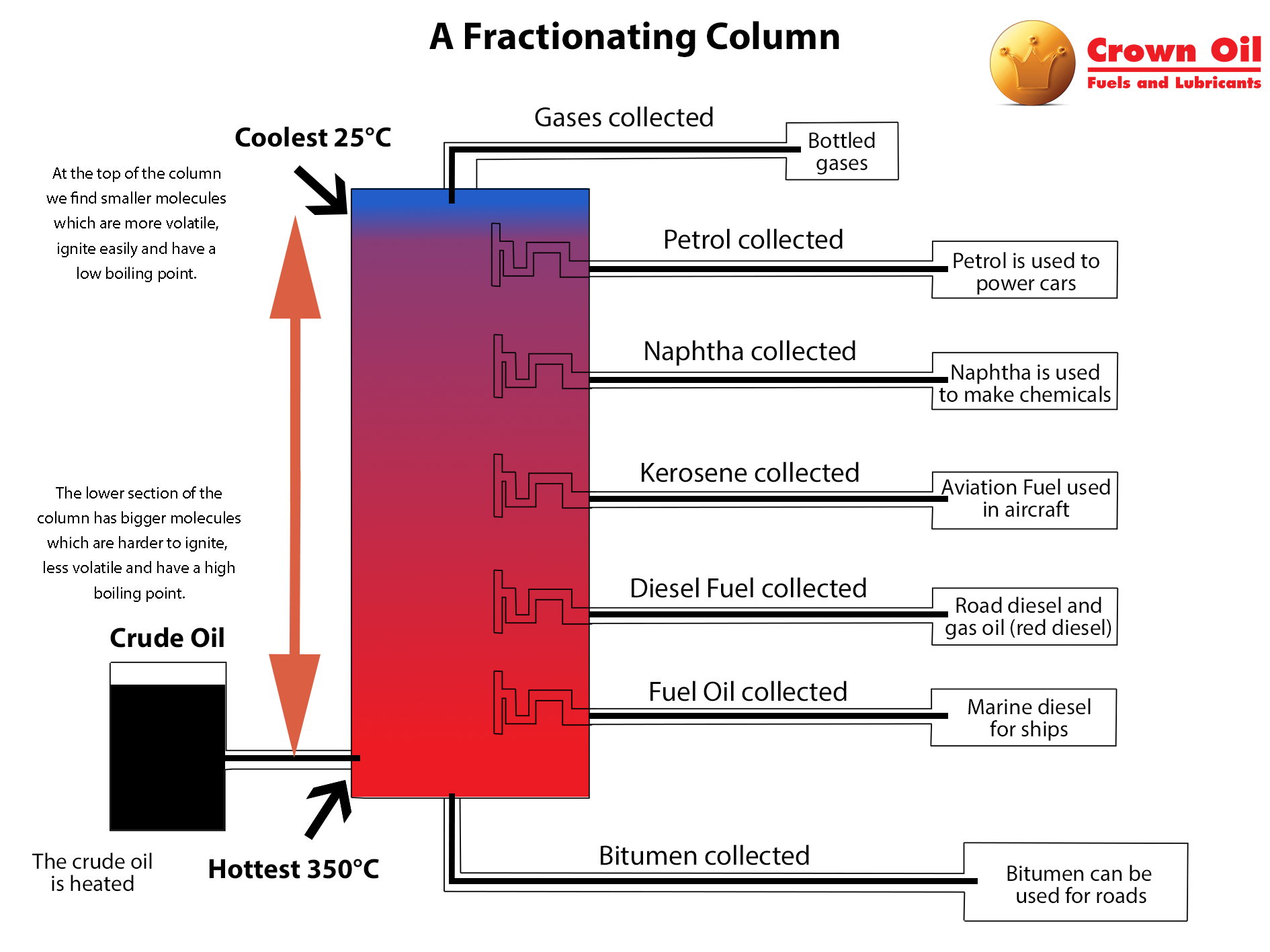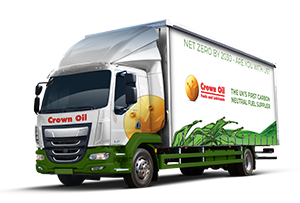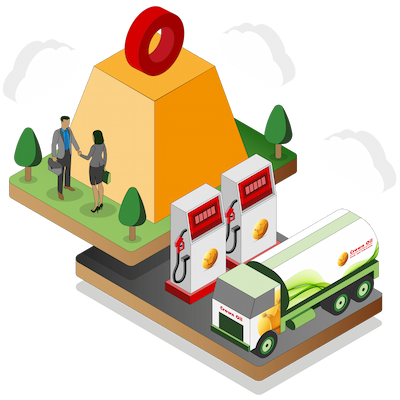Kerosene Fuel Explained – An Easy Guide
At Crown Oil, we have a long association with kerosene, from our humble beginnings when our founder started the business selling lamp oil door to door in 1928. During this time, we’ve built up vast knowledge about kerosene and we owe a lot to the invention for where we are today.
When our customers come to us with questions regarding kerosene, we’re fully equipped to answer any queries. To help you better understand kerosene, we’ve put together a detailed insight without blowing your mind with too much gobbledygook on its usage, purpose and legality.
If you have any questions about kerosene and would like to discuss your requirements, call our kerosene experts today on 0330 123 1444 to see how we can help you. We can also provide you with a quote based on the latest kerosene price and you can also make a purchase by calling the same number.
Contents
- What is kerosene?
- A short history of kerosene
- How is kerosene produced?
- Are kerosene fumes harmful?
- Is kerosene safe to use indoors?
- What are the advantages of using kerosene?
- What is kerosene used for?
- Kerosene types by application
- Why use kerosene for heating purposes?
- Does kerosene go bad?
- Alternatives to kerosene
- Why choose Crown Oil for kerosene?
What is kerosene?
Kerosene is a combustible oil with low viscosity used by businesses and homes as fuel to generate heat, light and power. Kerosene has many names, although these all refer to the same fuel; these names include kerosine, paraffin, heating oil, 28 second oil, kero, lamp oil, burning oil and boiler fuel. Kerosene is a hydrocarbon fuel and is obtained by fractional distillation of crude oil.
The term ‘28 second oil’ is used as a term to distinguish kerosene’s viscosity, through a specific test of how long it takes 50ml of the oil to drip into a beaker. This also explains how red diesel gets its ‘35-second’ name.

A brief history of kerosene
While oil has been extracted from crude oil for centuries – earliest records of distillation are from the 9th century – the term ‘kerosene’ has been in use since the mid-19th century, when it was registered as a trademark in the US by Canadian geologist Abraham Pineo Gesner in 1854 as a lamp oil that was extracted from coal. However, Abraham Gesner claims the production of kerosene actually began a little earlier in 1846, when he claims to have given a public demonstration in Charlottetown, Prince Edward Island of a new process he had discovered.
In 1851, American inventor, Samuel Martin Kier, developed the process of distilling crude oil and sold the resulting distillate as ‘carbon oil’. As a result of discovering how to distil crude oil, Kier is known as the grandfather of the American oil industry.
Historically, kerosene was extracted from fossil fuels like coal, oil shale and wood. Kerosene has managed to keep up with the times, facilitated by those who have discovered improved methods of distillation which have helped shape kerosene into the robust and reliable fuel it is today.
Before the invention of electricity, kerosene was our primary way to heat and light up the world. But times quickly changed which led to the use of oil lamps declining in more developed areas, and more commonly being associated with rural heating.
Its name came from κηρός (keros) which means wax in Greek – a waxy substance was initially produced from the distillation process. In 1854, its name was registered as a trademark by Gesner before it progressed into a genericised trademark name. The first company to distribute kerosene to businesses and homes was Kerosene Gas Light Company in 1854 after Gesner moved from Canada to Newtown Creek, Long Island, New York in order to set up his new company.
Kerosene sales in Greater Manchester, UK
Some years later in 1928, Harry Greensmith started the family-run and owned business which later became Crown Oil by selling kerosene door to door to residents in Heywood in Greater Manchester (where our headquarters still reside to this day), soon gaining the nickname ‘Harry Lamp Oil’ by the local community. So we have kerosene and Harry to thank for our huge success today! Read more about Crown Oil’s history.
Today, Crown Oil supplies many more fuels, oils and lubricants across the UK, but kerosene still remains one of our most popular fuels thanks to its versatility and combustive properties. Let’s take an in-depth look at the fuel and all the reasons why it’s relied on by businesses and homes across the UK.
How is kerosene produced?
Kerosene’s colour tends to be light, clear and free from solid matter. It’s typically pale, yellow or colourless but often has a dye added to distinguish it from other fuels such as red diesel.
Kero has a thin viscosity and a density between 0.78-0.81 g/cm³ (gram per cubic centimetre). Its actual density is 0.82 g/cm³, however as paraffin’s is 0.8g/cm³ and the two oils are virtually the same, a happy medium is found at 0.81g/cm³.
Chemically, kerosene is made up of a mixture of hydrocarbons, called alkanes. Its composition varies depending on its source but typically contains around 10 different hydrocarbons, each containing 10-16 carbon atoms per molecule.
Its main constituents are saturated straight-chain, branched-chain paraffins, and ring-shaped cycloparaffins (napthenes).
Kerosene is extracted from petroleum, a natural oil found beneath the earth’s surface. Using high temperatures between 150 and 275°C, petroleum is drilled out of the ground and broken down into a number of fuels through a process called fractional distillation, including petrol, fuel oil, butane, propane, lubricating oil and kerosene.
The combustible hydrocarbon liquid, kerosene, is then extracted, leaving a clear and thin oil which is then sold to distributors like Crown Oil.

Are kerosene fumes harmful?
Kerosene burns relatively cleanly and has a low carbon monoxide risk – and due to its lack of fuel vapour, it cannot explode or cause a fire. However, the oil gives off fumes and inhaling a subsequent amount of kerosene fumes can cause dizziness – and long-term could cause neurological or kidney damage. So, while kerosene is safe to touch, it is toxic to inhale or ingest and can be fatal.
According to Public Health England, fuel oil may be fatal if swallowed and enters airways, so seek medical treatment if this happens.
Is kerosene safe to use indoors?
Put simply, yes! Kerosene is a non-corrosive, less volatile fuel, compared to other fuels such as red diesel and gasoline. It has a flash point of 38°C compared to gasoline which is -40°C, making it considerably safe to store and handle.
What’s more, heating oil systems will not output any dirt, soot or odours indoors if installed and stored correctly.
What are the advantages of using kerosene?
- It’s safe – With a low risk of carbon monoxide poisoning and a clean burn, kerosene is one of the safest fuels available.
- It’s cheaper than gas – It’s economical to produce and has incredibly cheap prices, making it one of the most cost-effective ways to heat your home.
- It’s environmentally friendly – It produces fewer fumes in its paraffin form compared to coal and wood. However, it can emit some poisonous gases so it’s important to handle and store it correctly to avoid inhalation.
- It has a long shelf life – It’s non-corrosive so as long as it’s stored in a suitable tank that is kept under dry and controlled conditions.
What is kerosene used for?
From humble beginnings as a fuel for oil lamps, today uses for kerosene are primarily as heating oil and as a transport fuel, mostly as jet engine fuel. However, all over the world, there are many inventive uses of heating oil that make it an essential part of life.
The uses of kerosene depend on the fuel’s grade. In the UK, there are two grades of kerosene that fall within British Standard BS 2869 specs:
- BS 2869 Class C1 – It’s a lighter distillate and can be used in lanterns
- BS 2869 Class C2 – It’s a heavier distillate and is used for domestic heating oil and commercial uses
For more information on these fuel standards, read our fuel specifications guide.
Please note that this oil is not to be used as fuel for a road vehicle, off-road vehicle, vessel or any other machinery that is not an excepted machine.
Heating, lighting & cooking
Historically, kerosene was used as a source of light in oil lamps and lanterns, but this was a huge fire hazard and in 1880, almost 2 out of every 5 New York fires were caused by faulty kero lamps.
Many backpackers and underdeveloped countries, such as Nigeria and India, still use kerosene in lamps and liquid stoves today, where it’s sold in some petrol stations. The Amish tend to stay away from using electricity, so they often rely on kerosene for lighting during the night too.
In Japan, kerosene is used as a home heating fuel for installed and portable heaters. It can be purchased at any fuel station or be delivered to homes. Today, in England, kerosene is often used as a heating fuel in remote areas that are not connected to the national grid.
Jet engine fuel
More recently, kerosene is commonly used as aviation fuel; it’s less prone to freezing, it doesn’t burn too quickly at high temperatures and it’s highly combustible – meaning it’s perfectly suited to the demands of a plane.
Cleaning agent
Kerosene can be used as a cleaning liquid, on bike chains and rims to remove lubricants.
Fire entertainment
Kerosene is popularly used in entertainment by circus performers, safe effects and fire dancers, thanks to its high flash point and low fire temperature. It’s a much safer option than other flame sources, whilst still delivering an impressive act.
Its adaptability makes it one of our most popular fuels here at Crown Oil. It’s estimated that around 1.6m UK households [archived link] who are not connected to the mains network rely on kerosene with around 1,084,200 barrels of kerosene used around the globe every day.
Kerosene types by application
| Kerosene type | Intended application |
| Heating oil kerosene (C2 grade) | Domestic heating |
| Kleenburn Kerosene (C2 grade) | Domestic heating |
| Premium kerosene (C1 grade) | Heating in buildings with no chimney or flue |
| Odourless kerosene | Solvent and lubricant |
| High flash kerosene | Solvent |
| Jet fuel kerosene (Jet A1) | Aviation fuel |
Why use kerosene for heating purposes?
At Crown Oil, we supply kerosene to businesses and homes, mostly for heating and fuel purposes, from 205-litre oil drums up to 36,000 litres and more. Fire jugglers are also welcome to buy by the barrel too – that’s a whole lot of juggling!
With several alternatives to consider for heating your home and workplace, what are the benefits of choosing kerosene?
- High efficiency – More heat is released per unit volume of kerosene than for alternative fuels, such as gas or electricity
- Affordability – Low prices on Kerosene fuel make it one of the cheapest ways to heat your home or workplace
- Safety – The heating oil boasts a clean burn, with low carbon monoxide emissions
Does kerosene go bad?
Kerosene, like most fuels, should not be left in storage for extended periods of time as the fuel becomes contaminated with water, and this spoiled kerosene can cause damage to your heater.
We recommend testing your kerosene at least once a year – and our team is happy to help with this. We can also help with fuel uplift and fuel polishing, among our range of fuel environmental services.
Alternatives to kerosene
There are suitable alternatives to burning oil, depending on how you use it. As jet fuel, it is the preferred fuel.
As a heating fuel, there are cleaner blends of the fuel, such as Kleenburn Kerosene and premium kerosene, which are able to deliver a cleaner heating experience in the home.
In general though, if you are after a substitute for your kerosene heater, it’s best to do your research or speak to one of our experts, to see if another fuel works.
Why choose Crown Oil for kerosene?
If you’re looking to buy kerosene, there are a multitude of options for your heating oil needs:
- Environmentally friendly – With options such as Kleenburn Kerosene, premium kerosene and bulk buying options, Crown Oil works hard to have as little an impact on the environment as possible
- Free fuel management for businesses – Never run out of fuel with our team monitoring your usage and providing top-ups as required
- Flexible payment terms for businesses – Allowing you to pay in the way that suits your budget and schedule
- UK fuel delivery coverage – Crown Oil has depots all over the UK, so wherever you need your fuel, we can get it to you
- Standard 24 to 48-hour delivery – Saves you from unwanted downtime. We can even deliver within a few hours, thanks to our 24/7 emergency fuel service
- Cost-effective – Crown Oil can offer you attractive kerosene prices thanks to our ability to buy in bulk
If you need a reliable kerosene supplier, choose Crown Oil today. Give our fuel experts a call today to discuss your requirements and to see how we can help you. You can also request a quote and purchase kerosene by calling the same number.





